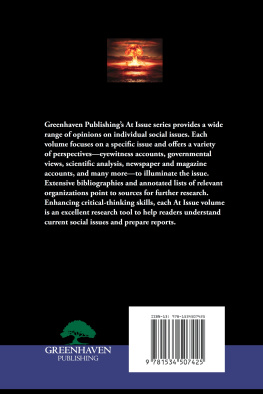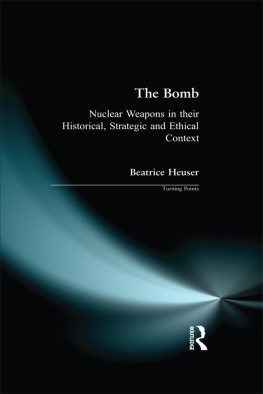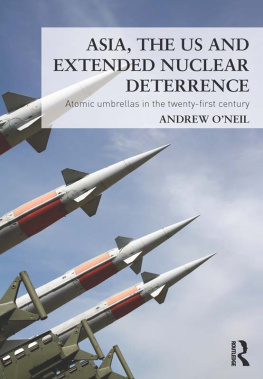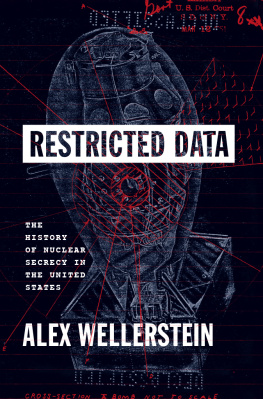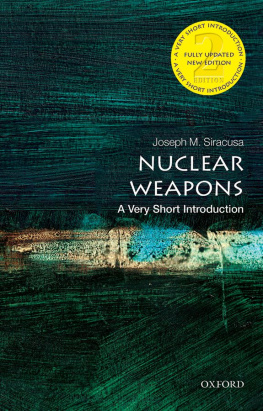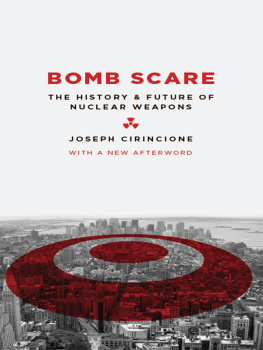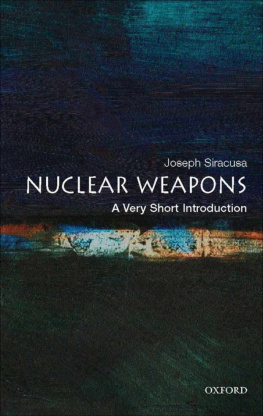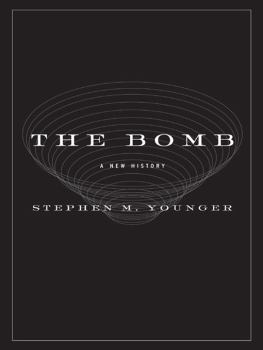
LIFE AND TIMES OF THE ATOMIC BOMB
Life and Times of the Atomic Bomb takes up the question of how the world found itself in the age of nuclear weapons and how it has since tried to find a way out of it. Albert I. Berger charts the story of nuclear weapons from their origins through the Atomic Age and the Cold War up through the present day, arguing that an understanding of the history of nuclear weapons is crucial to modern efforts to manage them. This book examines topics including nuclear strategy debates, weapon system procurement decisions, and arms control conferences through the people and leaders who experienced them.
Providing a chronological survey, Life and Times of the Atomic Bomb starts with the major scientific discoveries of the late nineteenth century that laid the groundwork for nuclear development. It then traces the history of nuclear weapons from their inception to the atomic bombings of Hiroshima and Nagasaki in 1945 and the reaction to them by key players on both sides. It continues its narrative into the second half of the twentieth century and the role of nuclear weapons throughout the Cold War, engaging in the debate over whether nuclear weapons are an effective deterrent. Finally, the closing chapters consider the atomic bombs place in the modern world and the transformation of warfare in an age of advanced technology.
This clear and engaging survey will be invaluable reading for students of the Cold War and twentieth-century history.
Albert I. Berger is Associate Professor of History and Peace Studies at the University of North Dakota. His previous publications include The Magic That Works: John W. Campbell and the American Response to Technology (1993) and Divided Germany during the Cold War, 19451962 (2001).
LIFE AND TIMES OF THE ATOMIC BOMB
Nuclear Weapons and the Transformation of Warfare
Albert I. Berger
First published 2016
by Routledge
711 Third Avenue, New York, NY 10017
and by Routledge
2 Park Square, Milton Park, Abingdon, Oxon OX14 4RN
Routledge is an imprint of the Taylor & Francis Group, an informa business
2016 Albert I. Berger
The right of Albert I. Berger to be identified as author of this work has been asserted by him in accordance with sections 77 and 78 of the Copyright, Designs and Patents Act 1988.
All rights reserved. No part of this book may be reprinted or reproduced or utilised in any form or by any electronic, mechanical, or other means, now known or hereafter invented, including photocopying and recording, or in any information storage or retrieval system, without permission in writing from the publishers.
Trademark notice: Product or corporate names may be trademarks or registered trademarks, and are used only for identification and explanation without intent to infringe.
British Library Cataloguing-in-Publication Data
A catalogue record for this book is available from the British Library
Library of Congress Cataloging-in-Publication Data
Berger, Albert I. (Albert Isaac), 1947 author.
Life and times of the atomic bomb / Albert I. Berger.
pages cm
Includes bibliographical references and index.
1. Atomic bombHistory. I. Title.
UG1282.A8B46 2015
623.451190973dc23
2015027349
ISBN: 978-0-7656-1985-3 (hbk)
ISBN: 978-0-7656-1986-0 (pbk)
ISBN: 978-1-315-72081-4 (ebk)
Typeset in Bembo
by HWA Text and Data Management, London
For Patricia I cannot count or describe the many reasons
CONTENTS
PART I
Chain Reactions
PART II
Rapid Assembly
PART III
Two Scorpions in a Bottle
PART IV
We All Breathe the Same Air
PART V
The Weapon of the Weak
This book has grown out of a course in the history of nuclear weapons that I have been privileged to teach at the University of North Dakota. I should first thank Bill Schwalm, theoretical physicist and my UND colleague, who recruited me to team-teach the course shortly after I arrived here in 1987.
The University and its various components have contributed generously and consistently to support this book and the course upon which it is based, including several instructional development grants and funds for travel to museums and archives. All of us in the UND History Department benefit from the generosity of the Schulte Professional Development Fund, which supported travel for research in once top-secret government documents made available at the National Security Archive, in Washington, DC. The University itself supported this work with a years release from teaching responsibilities that allowed me to write most of this book.
Bill Burr and the staff at the National Security Archive deserve special thanks for their longstanding efforts to make available to the public the documentary record of United States foreign and defense policy for the last half century and more. Some very good friends gave generously of their time and trouble to read and comment on this manuscript. Two of them, Tom Puckett, a fine and funny writer and my oldest friend, and Ty Reese, our department chair, read the entire project; Joe Fitzharris, Mike Jacobs, Jim Mochoruk, Dave Whalen, and David Wiener all read substantial portions of the manuscript and all of them contributed useful observations and comments of many kinds.
Steve Drummond, then of M. E. Sharpe, was the first to see the possibilities of a book like this, and when the project moved (with all of Sharpes list) over to Routledge, Genevieve Aoki, Catherine Aitken, and Margo Irvin picked it up with sympathy, competence, and patience.
The efforts of all the people who helped me made this a better book, and I thank them for that. They are, of course, innocent of any errors that remain. The responsibility for them is all mine.
The book you hold in your hands is a sketch (a bit more than a sketch in some appropriate spots) describing how the world found itself in the age of nuclear weaponsand how it has tried to find a way out of it. It is not a research monograph, but rather an effort at the synthesis (and some reinterpretation) of what some excellent historians have been writing, especially since the end of the Cold War. I have made fair use here of work by Alexandr Fursenko and Timothy Naftali, David Holloway, Richard Rhodes, Martin Sherwin and Kai Bird, and others. I have sometimes followed the story in different directions and come to different conclusions than they did, but their work, all of it quite accessible to a general reader, expands and illuminates what we know about this pivotal part of modern history.
The first chapters of the story describe a relatively small group of like-minded men (and three women) and the academic community in which they lived, the things they learned, and the things they did in the first half of the 20th century. These people and the institutions where they worked represented the height of European scientific scholarship at a time when European scholarship was the dominant way of thinking. The discovery of radiation, the new understandings of how atoms work, Einsteins special theory of relativity, were all part and parcel of 19th-century industrial capitalismand of the imperialism (there is no other word for it) that carried European capitalism around the world. Yet the scientists of the new century persisted in believing (and acting in the belief) that they were a trans-national fraternity that pursued the truth by studying nature and standing apart from, standing above, politics and national rivalries.


